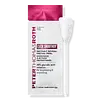What's inside
What's inside
 Key Ingredients
Key Ingredients

 Benefits
Benefits

 Concerns
Concerns

 Ingredients Side-by-side
Ingredients Side-by-side

Water
Skin ConditioningGlycolic Acid
BufferingPotassium Hydroxide
BufferingNiacinamide
SmoothingAcetyl Hexapeptide-8
HumectantPalmitoyl Tripeptide-38
Skin ConditioningPalmitoyl Tripeptide-5
Skin ConditioningAdenosine
Skin ConditioningHyaluronic Acid
HumectantSodium Hyaluronate
HumectantPotassium Sorbate
PreservativeSodium Benzoate
MaskingPotassium Hyaluronate
Skin ConditioningHydrolyzed Sodium Hyaluronate
Skin ConditioningSodium Hyaluronate Crosspolymer
HumectantSodium Acetylated Hyaluronate
HumectantAllantoin
Skin ConditioningPinus Sylvestris Leaf Extract
TonicIllicium Verum Fruit Extract
PerfumingCitric Acid
BufferingCaprylyl Glycol
EmollientButylene Glycol
HumectantPentylene Glycol
Skin ConditioningSodium Gluconate
Skin ConditioningDipropylene Glycol
HumectantHydroxyacetophenone
AntioxidantDipotassium Glycyrrhizate
Humectant1,2-Hexanediol
Skin ConditioningHydroxypropyl Cyclodextrin
MaskingWater, Glycolic Acid, Potassium Hydroxide, Niacinamide, Acetyl Hexapeptide-8, Palmitoyl Tripeptide-38, Palmitoyl Tripeptide-5, Adenosine, Hyaluronic Acid, Sodium Hyaluronate, Potassium Sorbate, Sodium Benzoate, Potassium Hyaluronate, Hydrolyzed Sodium Hyaluronate, Sodium Hyaluronate Crosspolymer, Sodium Acetylated Hyaluronate, Allantoin, Pinus Sylvestris Leaf Extract, Illicium Verum Fruit Extract, Citric Acid, Caprylyl Glycol, Butylene Glycol, Pentylene Glycol, Sodium Gluconate, Dipropylene Glycol, Hydroxyacetophenone, Dipotassium Glycyrrhizate, 1,2-Hexanediol, Hydroxypropyl Cyclodextrin
Water
Skin ConditioningGlycolic Acid
BufferingSodium Hydroxide
BufferingGlycerin
HumectantPropanediol
SolventEthylhexyl Olivate
Skin ConditioningHydroxyethyl Acrylate/Sodium Acryloyldimethyl Taurate Copolymer
Emulsion StabilisingC13-14 Isoparaffin
EmollientC11-12 Isoparaffin
Skin ConditioningPhytic Acid
Malic Acid
BufferingMandelic Acid
AntimicrobialLactic Acid
BufferingLipase
Skin ConditioningProtease
ExfoliatingSqualane
EmollientPolyglyceryl-10 Stearate
Skin ConditioningC15-23 Alkane
SolventHydroxyacetophenone
AntioxidantPhenoxyethanol
PreservativeTricaprylin
MaskingGlyceryl Oleate
EmollientEthylhexyl Polyhydroxystearate
EmollientTetradecane
PerfumingC13-14 Alkane
SolventDecyl Glucoside
CleansingMaltodextrin
AbsorbentXanthan Gum
EmulsifyingLecithin
EmollientSclerotium Gum
Emulsion StabilisingPolyglyceryl-4 Oleate
EmulsifyingCarrageenan
Silica
AbrasiveWater, Glycolic Acid, Sodium Hydroxide, Glycerin, Propanediol, Ethylhexyl Olivate, Hydroxyethyl Acrylate/Sodium Acryloyldimethyl Taurate Copolymer, C13-14 Isoparaffin, C11-12 Isoparaffin, Phytic Acid, Malic Acid, Mandelic Acid, Lactic Acid, Lipase, Protease, Squalane, Polyglyceryl-10 Stearate, C15-23 Alkane, Hydroxyacetophenone, Phenoxyethanol, Tricaprylin, Glyceryl Oleate, Ethylhexyl Polyhydroxystearate, Tetradecane, C13-14 Alkane, Decyl Glucoside, Maltodextrin, Xanthan Gum, Lecithin, Sclerotium Gum, Polyglyceryl-4 Oleate, Carrageenan, Silica
 Reviews
Reviews

Ingredients Explained
These ingredients are found in both products.
Ingredients higher up in an ingredient list are typically present in a larger amount.
Glycolic Acid is arguably the most famous alpha hydroxy acid (AHA) with tons of research backing its benefits.
It is found naturally in sugar cane but the form used in skincare is usually synthetic for purity and stability.
Glycolic acid removes the top layer of dead skin cells to allow newer and fresher ones to emerge.
AHAs work by breaking down the structural “glue” that holds old skin cells in place. When that buildup is gone, your skin can renew itself more efficiently.
Research also shows glycolic acid stimulates collagen production, helping to firm and thicken the skin over time. This is one of its biggest advantages over other AHAs.
Overall, glycolic acid helps with:
Fun fact: Glycolic acid boosts skin hydration by helping it produce molecules that increase hyaluronic acid naturally.
To work best, glycolic acid products should have a pH between 3-4 (that’s where exfoliation is most effective but still gentle on skin).
The pH and concentration of a product are key to its effectiveness:
It is normal to feel a slight stinging sensation when using glycolic acid. This usually fades as your skin adjusts.
Because glycolic acid has the smallest molecular size in the AHA family, it can penetrate deeper, which enhances its effectiveness but also makes it more likely to irritate sensitive skin.
If your skin is very sensitive or prone to rosacea, glycolic acid may be too strong; in that case, try milder options like lactic acid or a PHA instead.
Recent studies suggest glycolic acid might even help protect against UV damage. But don’t skip sunscreen! Freshly exfoliated skin is more sensitive to the sun.
Glycolic acid is a skincare superstar. It smooths, brightens, hydrates, and firms the skin. Unless you’re highly sensitive, it’s well worth adding to your routine.
Read more about some other popular AHA's here:
Learn more about Glycolic AcidHydroxyacetophenone is antioxidant with skin conditioning and soothing properties. It also boosts the efficiency of preservatives.
This ingredient is not irritating or sensitizing.
Water. It's the most common cosmetic ingredient of all. You'll usually see it at the top of ingredient lists, meaning that it makes up the largest part of the product.
So why is it so popular? Water most often acts as a solvent - this means that it helps dissolve other ingredients into the formulation.
You'll also recognize water as that liquid we all need to stay alive. If you see this, drink a glass of water. Stay hydrated!
Learn more about Water